
If a highly paid marketing consultant had come to Plaimont a decade ago, they might have given the following advice: give up on these difficult-to-pronounce, unusual grape varieties with their distinctive local flavours. Instead, plant the grape varieties that people know and love – Sauvignon Blanc, Merlot, Chardonnay and Cabernet Sauvignon. Make fruity, approachable wines. Blend in some grape juice concentrate to sweeten them up a bit. Make the wines that people want to buy: don’t try to force your obscure wines on the consumer.
But I’m fairly sure this would have been disastrous advice. Plaimont would have been sucked into a rapid race to the bottom in terms of pricing, competing with countries who could make wine much more cheaply. And the heritage of the region would have been disrespected and damaged, perhaps beyond repair.

Instead it is encouraging to see a large company, with some 5000 hectares of vines under their control, taking an approach that is based on regional flavour and identity. In the three appeallations they work in, Saint Mont, Côtes de Gascogne and Madiran, they are using the traditional varieties. But they are also looking to find what I like to call ‘new old’ varieties from the region. These are varieties that used to be grown but were discarded for the wrong reason. As I mentioned in my earlier piece on their Cuvée Prephylloxerique, in the past there was a need for wine as a staple. People drank a lot of it, and this wasn’t fancy drinking by fancy people. It created a demand for volume over just about any other criteria, so vines that didn’t yield highly but which produced characterful wines were often sidelined or forgotten altogether.
Now, the team at Plaimont, led by research coordinator Nadine Raymond, has been making a big effort to unearth these forgotten varieties, and see what sort of potential they have. As well as working her way through existing older vineyards, with the help of some of France’s top ampelographers, she also has at her disposal a unique treasure.
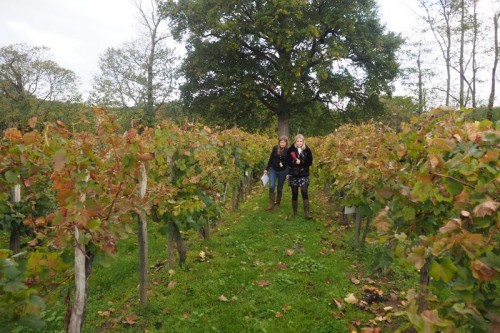
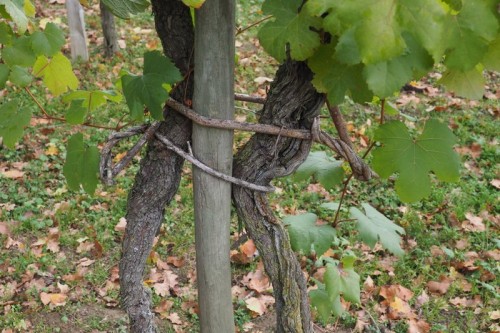
This is an ancient 0.2 hectare vineyard in Sarragachies. The Vins de Sarragachies are a historical monument and this plot is mentioned in records dating back to the early 19th century. Specifically, there’s a reference to it in the famous Cart de Cassini, the first detailed map published that covered all of France, from 1810. So these vines, which are on their own roots, are properly old. This plot was rediscovered by Plaimont in 1999, and they have been busy mining its viticultural riches. Overall there are 21 different varieties planted here, with seven of them unknown.
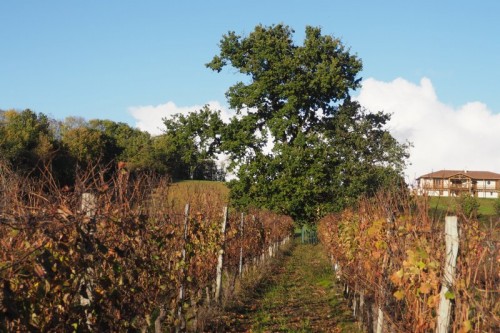
From this resource, plus the results of other viticultural forays, in 2002 Plaimont planted an experimental conservatory vineyard, the Conservatoire Ampélograhique, in Pouydraquin. This has 20 or so vines each of 37 different vinifera varieties, one wild vinifera (V. vinifera sylvestris), and one tetraploid version of the Pinenc variety.
From these vines, Nadine makes microvinifications each year. The results show that some varieties were rightly forgotten: they make low yields of very ordinary wines. But others show a lot of promise, and not least Tardif. This is one variety that will definitely be making an appearance in the vineyards, because it makes lovely wines with moderate alcohol and a distinct pepperiness (from very high levels of rotundone).
Why are new varieties needed? Plaimont are very happy with their existing white varieties (Gros Manseng, Petit Manseng, Petit Corbu and Arrufiac), but need something else to blend with Tannat for the reds. Currently, Tannat is blended with Cabernet Sauvignon, Cabernet Franc and Pinenc. The two Cabernets have trouble ripening. Pinenc (aka Fer Servadou) is great, but is very sensitive during flowering so yields can be quite low. And Tannat itself has plenty of personality but these days ripens with high potential alcohols, so could do with a bit of taming. It’s also very demanding viticulturally.
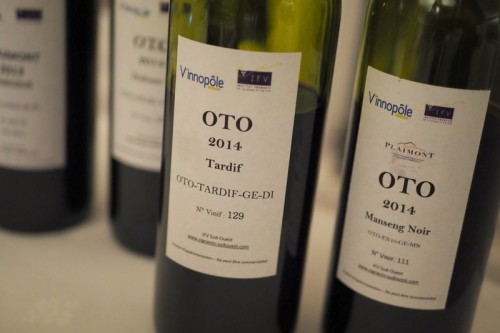
We tried microvinifications of four different red varieties:
Chacolis 2013
Cousin of Cabernet Franc. Intense with tannic black fruits, and some green notes in the background. Good acidity, too. Nice maturity. They think this might be better than Cabernet Franc, in terms of reaching maturity. Now they have 300 plants of this.
Dubosc 1 2014
An unknown variety. Related to Tannat. Not clear whether this is hermaphrodite or female: it has male parts but they don’t know whether this is effective. It’s a very late variety. Dense, structured and tannic with lovely blackcurrant and black cherry fruit. Grippy and taut with lovely freshness. Lots of impact, but not rough.
Manseng Noir 2014
Plaimont have been working quite a bit with this variety, and in these microvinifications that are looking to see whether there is a difference between the three selections found in the vineyard. This one was identified in Madiran. Green edge to the meaty, olive-laced nose. Lots of sweet fruit too. Smoked meat and spice on the palate with lovely ripe flavours and moderate alcohol.
Tardif 2014
Such a good grape! They will have 1500 plants to plant next year. They uHave 40 in the conservatory. Lovely bright, peppery, supple red and black fruits. Lovely supple wine with brightness and peppery detail. Very interesting with freshness and detail, good acidity and nice tannins. This could be a great variety in this region.
It was raining when we visited, but here’s a quick clip showing what the vineyard looks like:

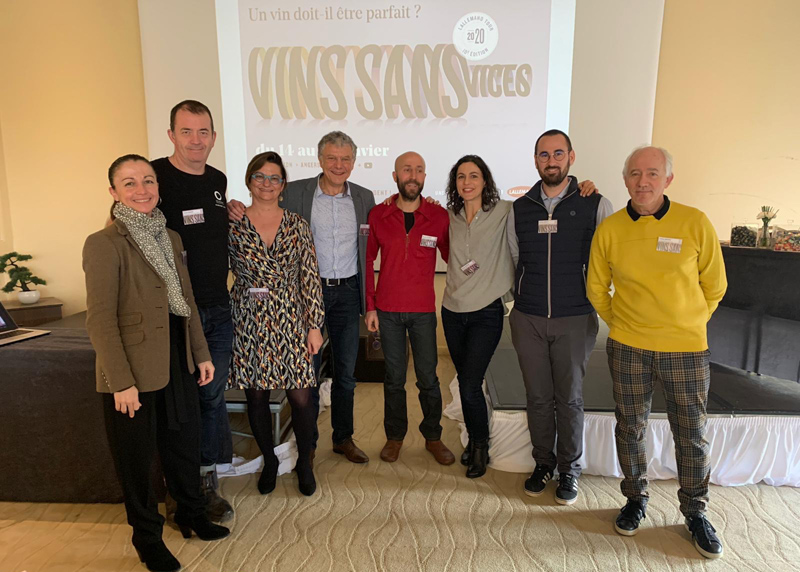
It’s funny, I’d bet some marketing expert said exactly that to Plaimont a decade ago.
And they did; that’s where most of their business comes from. Producing easy-drinking wines that they own-label for supermarkets.
Get the money in from the easy route, then start to play with the more esoteric things.
Perhaps it’s as a result of the interest in “natural” (“authentic”) wines that they’ve allowed a slice of their budget to resurrect some of the other varieties and promote them to the likes of you Jamie (cleverly realising you’d be enthusiastic).
Perfect marketing then, I think.
yes, except that their commercial bottlings are also from local varieties – e.g. the latest tesco finest saint mont and the tesco finest cotes de gascogne